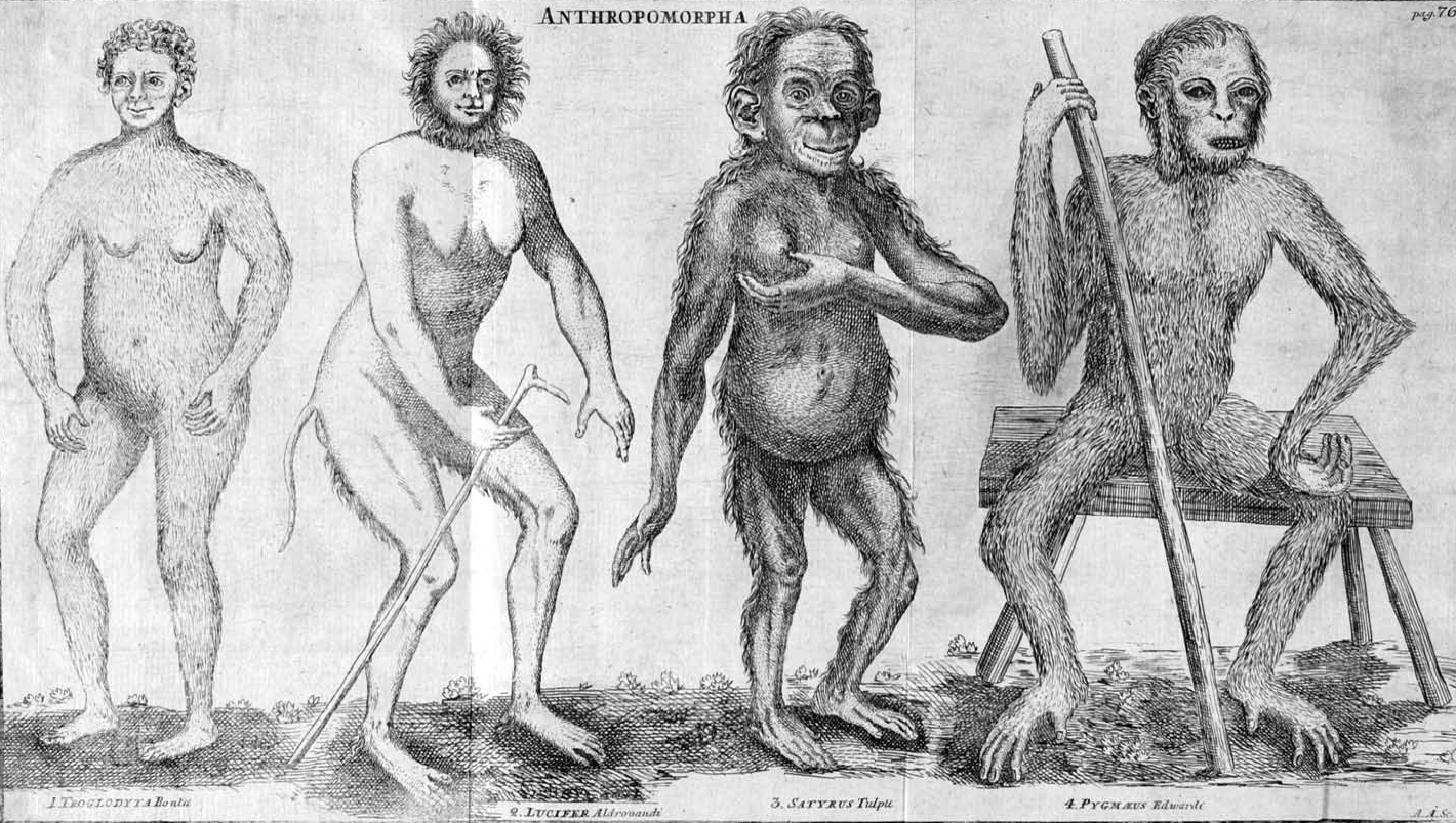Anthropomorpha on:
[Wikipedia]
[Google]
[Amazon]
 Anthropomorpha (original spelling: Antropomorpha) is a defunct taxon, replaced by ''
Anthropomorpha (original spelling: Antropomorpha) is a defunct taxon, replaced by ''
 Anthropomorpha (original spelling: Antropomorpha) is a defunct taxon, replaced by ''
Anthropomorpha (original spelling: Antropomorpha) is a defunct taxon, replaced by ''Primates
Primates is an order of mammals, which is further divided into the strepsirrhines, which include lemurs, galagos, and lorisids; and the haplorhines, which include tarsiers and simians ( monkeys and apes). Primates arose 74–63 ...
''.
The order was established by Carl Linnaeus
Carl Linnaeus (23 May 1707 – 10 January 1778), also known after ennoblement in 1761 as Carl von Linné,#Blunt, Blunt (2004), p. 171. was a Swedish biologist and physician who formalised binomial nomenclature, the modern system of naming o ...
in the first edition of his book Systema Naturae
' (originally in Latin written ' with the Orthographic ligature, ligature æ) is one of the major works of the Sweden, Swedish botanist, zoologist and physician Carl Linnaeus (1707–1778) and introduced the Linnaean taxonomy. Although the syste ...
(1735) for genera ''Homo
''Homo'' () is a genus of great ape (family Hominidae) that emerged from the genus ''Australopithecus'' and encompasses only a single extant species, ''Homo sapiens'' (modern humans), along with a number of extinct species (collectively called ...
'' (humans), '' Simia'' (monkeys and apes in general) and '' Bradypus'' (sloths). The taxon is notable for the history of human taxonomy as the first to combine apes
Apes (collectively Hominoidea ) are a superfamily of Old World simians native to sub-Saharan Africa and Southeast Asia (though they were more widespread in Africa, most of Asia, and Europe in prehistory, and counting humans are found glo ...
(Linnaeus' '' Simia'') and humans
Humans (''Homo sapiens'') or modern humans are the most common and widespread species of primate, and the last surviving species of the genus ''Homo''. They are Hominidae, great apes characterized by their Prehistory of nakedness and clothing ...
under the same clade.
In the 1758 edition of the same book, Linnaeus discarded this name and began to use the word Primates
Primates is an order of mammals, which is further divided into the strepsirrhines, which include lemurs, galagos, and lorisids; and the haplorhines, which include tarsiers and simians ( monkeys and apes). Primates arose 74–63 ...
, which has replaced Anthropomorpha completely. A dissertation on the ''Anthropomorpha'' was published by Linnaeus' student Christian Emmanuel Hoppius in 1760.
The name is no longer considered valid, as the animals that were included within Anthropomorpha are now believed to belong to multiple clade
In biology, a clade (), also known as a Monophyly, monophyletic group or natural group, is a group of organisms that is composed of a common ancestor and all of its descendants. Clades are the fundamental unit of cladistics, a modern approach t ...
s. For example, two-toed sloths were included within Anthropomorpha, but are now considered to be in the family Choloepodidae, which is not closely related to the primate
Primates is an order (biology), order of mammals, which is further divided into the Strepsirrhini, strepsirrhines, which include lemurs, galagos, and Lorisidae, lorisids; and the Haplorhini, haplorhines, which include Tarsiiformes, tarsiers a ...
s. Comte de Buffon
Georges-Louis Leclerc, Comte de Buffon (; 7 September 1707 – 16 April 1788) was a French naturalist, mathematician, and cosmologist. He held the position of ''intendant'' (director) at the ''Jardin du Roi'', now called the Jardin des plant ...
correctly rejected the combination of sloths and primates within the same order.
References
{{reflist Obsolete primate taxa Mammal orders